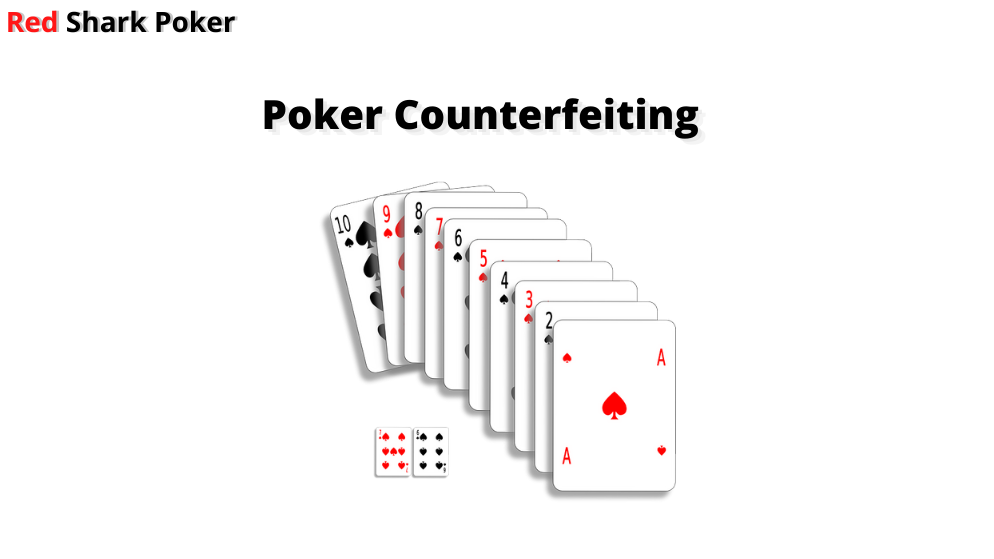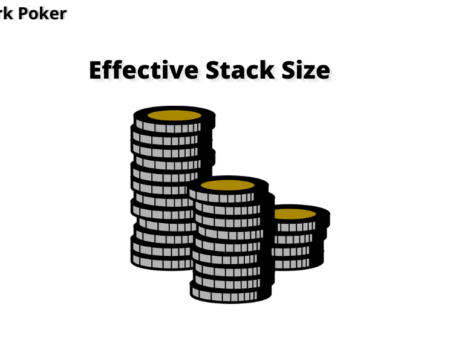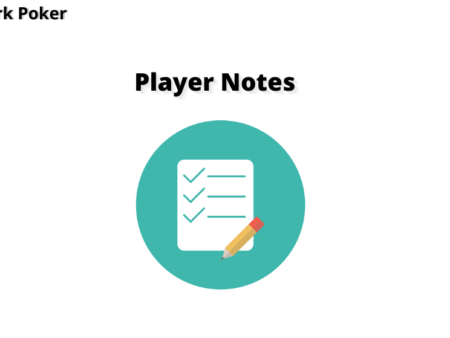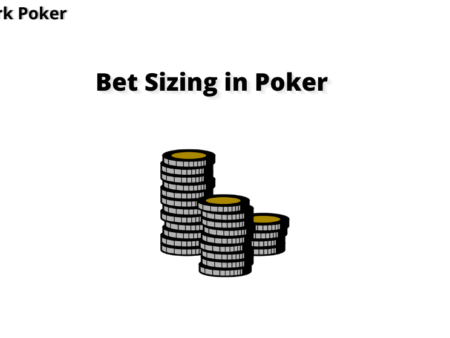

Counterfeiting, in general, implies making illegal copies of things like banknotes, official documents, etc. The word has negative connotations, but don’t worry; there is nothing illegal about the concept of counterfeiting in poker. Poker counterfeiting is a generic concept that you should be aware of. It does not have many strategic implications, but the knowledge of it helps you to understand the game better.
What is Counterfeiting in Poker?
You may not know the term, but you may have already been counterfeited many times before! Counterfeiting in poker occurs when the community cards make your hand vulnerable. In other words, your hand is said to be counterfeited when your relatively strong hand gets weakened by the community cards.
A classic example, which you may have encountered before, is when you are dealt 5♦ 6♣ on a K♦ 5♥ 6♠ flop. Here you have two pairs 5♦ 5♥ and 6♣ 6♠. A Jack hits on the turn, and the board reads K♦ 5♥ 6♠ J♣. You still have two pairs, and your hand still looks strong here. However, another Jack hits on the river, and the board reads K♦ 5♥ 6♠ J♣ J♦. Now, your top two pairs are J♣ J♦ and 6♣ 6♠. The community cards have made your pair of fives useless or redundant. If your opponent has a King, his two pairs KK and JJ will beat your two pairs JJ and 66. And if your opponent has a Jack, his trips will beat your two pairs.
So, the community cards have counterfeited your pair of fives.
What are Different Types of Poker Counterfeiting?
As we have mentioned before, it is the board or community cards that counterfeit one or both of your hole cards. So, the real villain here is the board. If you know the different types of poker counterfeiting, you may not lose a lot of money by betting on such dangerous boards.
1) Two Pair Counterfeiting in Poker
Your Hand: 8♣ 6♦
Turn: A♦ 8♠ 6♥ J♣
Your best hand on the turn: A♦ 8♠ 8♣ 6♦ 6♥
Your Hand: 8♣ 6♦
River: A♦ 8♠ 6♥ J♣ J♦
Your best hand on the river: A♦ J♣ J♦ 8♠ 8♣
J♦ has counterfeited your pair of sixes on the river. If your opponent has an ace, his two pairs AA and JJ will beat your two pairs JJ and 88. If he has a Jack, his trips will beat your two pairs.
2) Straight Counterfeiting in Poker
Your Hand: A♣ K♦
Turn: T♦ J♠ Q♥ K♣
You have the nut straight here! If your opponent has a nine, you have a better straight and can extract a lot of value here.
Your Hand: A♣ K♦
River: T♦ J♠ Q♥ K♣ A♦
As an ace has hit the board, your best hand has no value now! You will have to split the pot as the board has the nut straight!
The community cards have counterfeited both of your hole cards A♣ K♦.
3) Flush Counterfeiting in Poker
Your Hand: 4♦ 5♦
Turn: 7♦ J♦ A♦ 9♦
You have a flush here; but if your opponent holds a 6♦ or above, he will have the nut flush.
Your Hand: 4♦ 5♦
River: 7♦ J♦ A♦ 9♦ K♦
This is another example of poker counterfeiting where the board has the better flush. If your opponent doesn’t have any diamond-suited card, you will have to split the pot as the board has nut flush.
So, the community cards have counterfeited both of your hole cards 4♦ 5♦.
4) Full House Counterfeiting in Poker
Your Hand: 4♣ 5♦
Turn: T♦ T♠ T♥ 4♦
You have a full house here – T♦ T♠ T♥ 4♣ 4♦
Your Hand: 4♣ 5♦
River: T♦ T♠ T♥ 4♦ T♣
With a Ten on the river, the board has quads here. Any opponent with a 6 or above will beat your hand as he will be holding Quads with a better kicker.
So, the community cards have counterfeited both of your hole cards 4♣ 5♦.
How to Handle Counterfeiting in Poker?
Seeing your best hand getting cracked by the board can be really frustrating. As you have no control over the board, the best approach is to accept the fact that you got beat. Be aware of the board texture and fold even if you have a relatively strong hand. It is really difficult to give up the best hand. But you need to be careful of such boards that can counterfeit your hand; so, the best move will be to play cautiously.
Another way to avoid such situation is to bet strong and give tough pot odds to your opponent and force him to fold. For example, if you hit a flush on a 7♦ J♦ Q♦ flop with 4♦ 5♦, it is better to bet strong and force your opponent to fold. Slowplaying here can prove to be costly as any diamond-suited card can lead to a flush counterfeiting in poker.
The concept of counterfeiting is closely related to reverse implied odds. Click to read: Reverse Implied Odds in Poker
Conclusion
If you are a beginner, you should definitely know the concept of counterfeiting in poker. This concept will help you to avoid betting on dangerous boards and save a lot of money. If your best hand becomes the worst due to the board texture, learn to accept it and continue playing without tilting. Once you familiarize with the concept, you will be able to deal with poker counterfeiting in a much better way!




